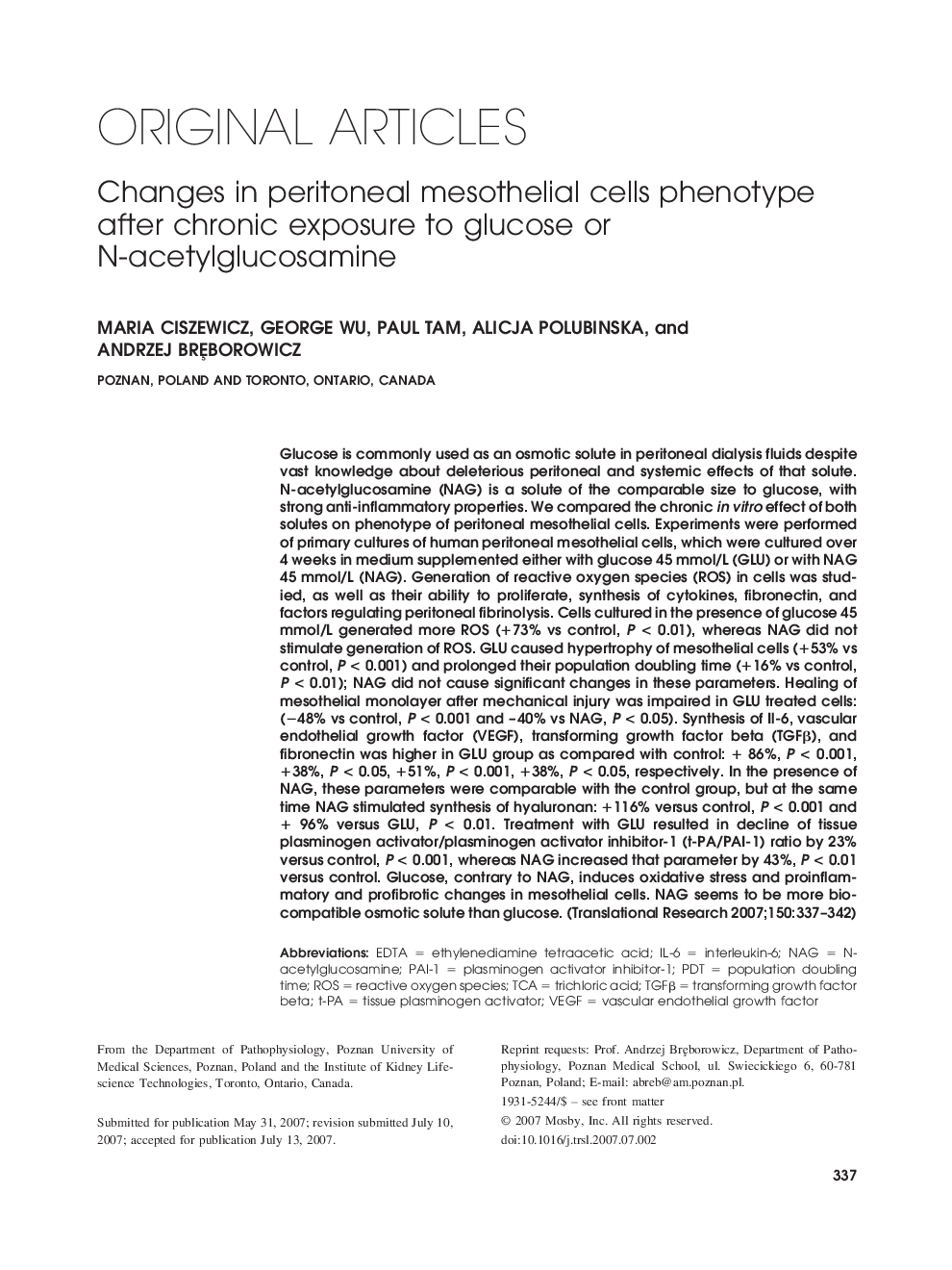| کد مقاله | کد نشریه | سال انتشار | مقاله انگلیسی | نسخه تمام متن |
|---|---|---|---|---|
| 3841492 | 1597944 | 2007 | 6 صفحه PDF | دانلود رایگان |

Glucose is commonly used as an osmotic solute in peritoneal dialysis fluids despite vast knowledge about deleterious peritoneal and systemic effects of that solute. N-acetylglucosamine (NAG) is a solute of the comparable size to glucose, with strong anti-inflammatory properties. We compared the chronic in vitro effect of both solutes on phenotype of peritoneal mesothelial cells. Experiments were performed of primary cultures of human peritoneal mesothelial cells, which were cultured over 4 weeks in medium supplemented either with glucose 45 mmol/L (GLU) or with NAG 45 mmol/L (NAG). Generation of reactive oxygen species (ROS) in cells was studied, as well as their ability to proliferate, synthesis of cytokines, fibronectin, and factors regulating peritoneal fibrinolysis. Cells cultured in the presence of glucose 45 mmol/L generated more ROS (+73% vs control, P < 0.01), whereas NAG did not stimulate generation of ROS. GLU caused hypertrophy of mesothelial cells (+53% vs control, P < 0.001) and prolonged their population doubling time (+16% vs control, P < 0.01); NAG did not cause significant changes in these parameters. Healing of mesothelial monolayer after mechanical injury was impaired in GLU treated cells: (−48% vs control, P < 0.001 and –40% vs NAG, P < 0.05). Synthesis of Il-6, vascular endothelial growth factor (VEGF), transforming growth factor beta (TGFβ), and fibronectin was higher in GLU group as compared with control: + 86%, P < 0.001, +38%, P < 0.05, +51%, P < 0.001, +38%, P < 0.05, respectively. In the presence of NAG, these parameters were comparable with the control group, but at the same time NAG stimulated synthesis of hyaluronan: +116% versus control, P < 0.001 and + 96% versus GLU, P < 0.01. Treatment with GLU resulted in decline of tissue plasminogen activator/plasminogen activator inhibitor-1 (t-PA/PAI-1) ratio by 23% versus control, P < 0.001, whereas NAG increased that parameter by 43%, P < 0.01 versus control. Glucose, contrary to NAG, induces oxidative stress and proinflammatory and profibrotic changes in mesothelial cells. NAG seems to be more biocompatible osmotic solute than glucose.
Journal: Translational Research - Volume 150, Issue 6, December 2007, Pages 337–342